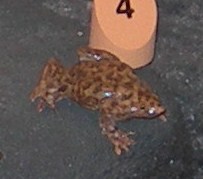Facts About Shovelnose frog
Shovelnose frogs, belonging to the genus Hemisus and the sole representatives of the Hemisotidae family, are intriguing creatures native to the tropical and subtropical regions of sub-Saharan Africa. They exhibit modest dimensions, growing to a maximum length of approximately 8 cm. These frogs possess distinctive round bodies, short limbs, and small, narrow heads with upturned noses, ideally suited for their burrowing lifestyle.
These amphibians spend most of their lives underground. The female excavates a cavity to lay her eggs, while the male departs through a tunnel, leaving the female to guard the eggs. After it rains, the female uses her nose to locate a water source where the tadpoles can thrive. Remarkably, some tadpoles can even survive outside water for a few days.
A particularly unique feature of shovelnose frogs is their head-first burrowing technique. Unlike most burrowing frogs that dig backwards, these frogs, aptly nicknamed "snout-burrowers" lead with their noses. Certain species of shovelnose frogs are even kept as pets due to their captivating behavior.
The genus Hemisus encompasses several species, each with its own common name, such as the Mongu shovelnose frog, Masiliwa snout-burrower, Guinea shovelnose frog, spotted shovelnose frog, and marbled shovelnose frog, among others. These species have been documented and described by various researchers over the years, each contributing to the extensive body of knowledge surrounding these exceptional frogs.

 Cameroon
Cameroon